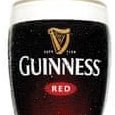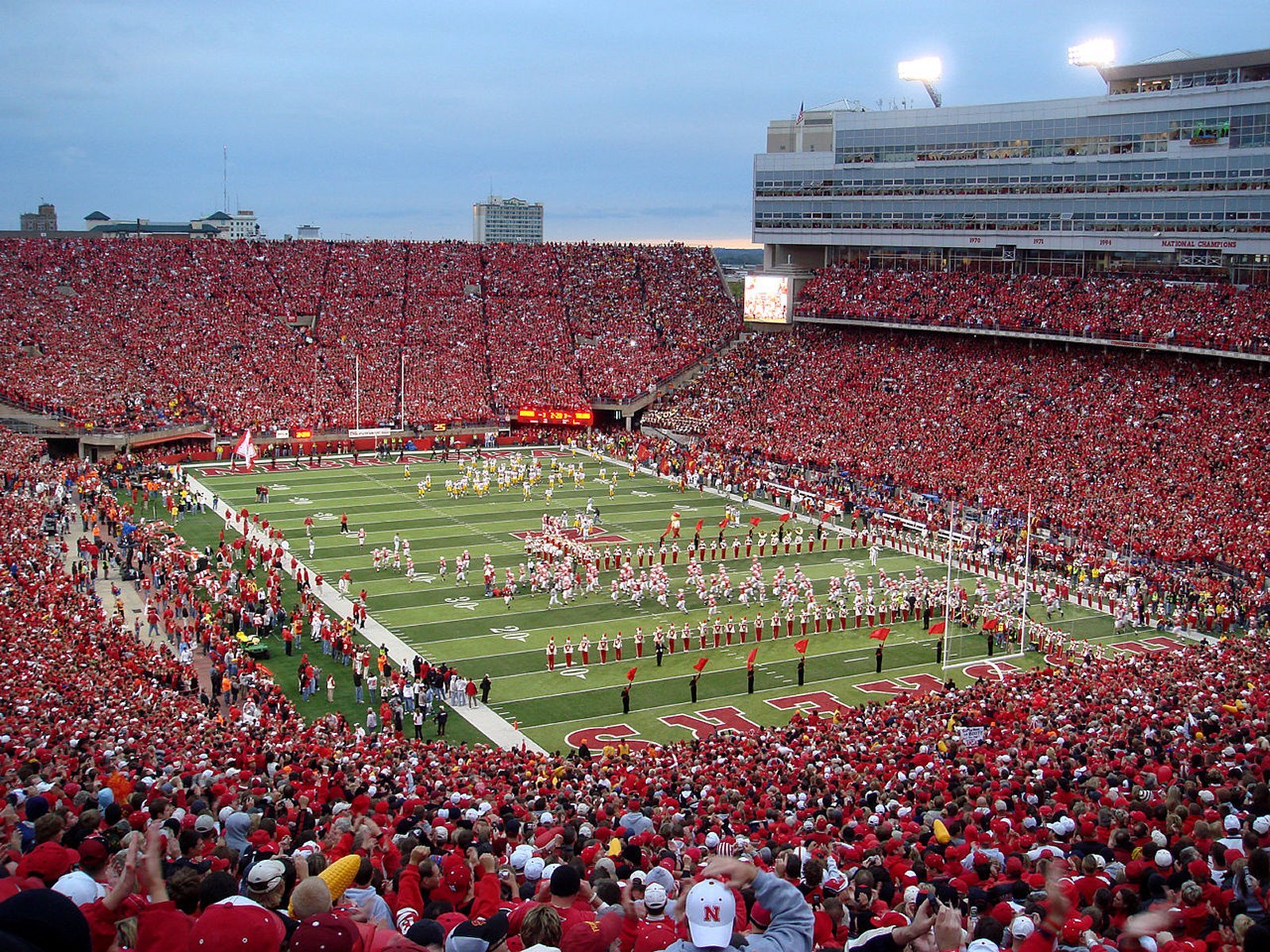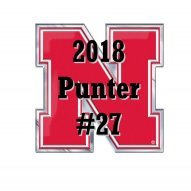-
Posts
803 -
Joined
-
Last visited
Content Type
Profiles
Forums
Events
Articles
Media Demo
Everything posted by beorach
-
I was listening to 1620 today and the guys were talking about (this topic and) how the punt coverage allowed just 12 yards all season or something? DB was talking about how excruciating it was to work on special teams, especially considering the level of detail TO brought, when that team wasn't really feeling like they'd be punting that much anyway.
- 25 replies
-
- Hail Varisty
- 1995
-
(and 1 more)
Tagged with:
-

A Different Look at Our Defense - Yards Per Play by Opponent
beorach replied to Mavric's topic in Husker Football
I agree. Probably anything below 0.5 yards per rush is basically nothing. Not sure about passing. Probably a couple clicks more than that. I was mainly curious about whether we were really stopping the run or just not facing running teams. Since we generally haven't "stopped" the run any better than the other teams that these teams have played, I'm not sure we've been as good as it seems like. And, by the same token, a lot of the passing yards have been because teams are throwing a lot. The average passing attempts faced by a FBS team to date, only in games against other FBS teams, is 183.24...and one standard deviation is 37.28. Nebraska has faced 310 passing attempts. The average rushing attempts is 222 and one standard deviation is 40. Nebraska has faced 198. Teams are passing a lot more on Nebraska than average but they're not running less to a comparable extent. The average number of plays a defense has faced is 405 with a standard deviation equal to 59.9. Nebraska has had 508 plays run against them...so that helps explain that. Interesting. Does this take into account that many teams may have had a bye week? If you did this actually for plays per game, it may help. Thanks, The total defense category doesn't have a plays per game category...but there are always total yardage and total yardage per game figures in the other categories (such that I just consider those to account for the disparity in the number of games played). The average number of games played (by FBS teams against FBS teams) is six with a standard deviation of 1. Considering we have 128 teams, though, I figure there shouldn't be any huge miss because of the matter of both bye weeks and weeks teams played FCS (?) teams. It's a fair point, of course. Understand. I just think that we are in the very small minority of programs that have not had a bye week yet. So, when I was looking at the average number of plays faced was 405 and we have faced 508 but the average games played is 6 and we have played 7, the actual number of plays per game might not be that far off from the average. You are correct. The number of teams that have played seven games against FBS teams is just 16. There are four teams that have only played four...and only one of those is a P5 one (North Carolina). I appreciate that thought because it makes things seem better than they did at first blush (or however you say that). -

A Different Look at Our Defense - Yards Per Play by Opponent
beorach replied to Mavric's topic in Husker Football
I agree. Probably anything below 0.5 yards per rush is basically nothing. Not sure about passing. Probably a couple clicks more than that. I was mainly curious about whether we were really stopping the run or just not facing running teams. Since we generally haven't "stopped" the run any better than the other teams that these teams have played, I'm not sure we've been as good as it seems like. And, by the same token, a lot of the passing yards have been because teams are throwing a lot. The average passing attempts faced by a FBS team to date, only in games against other FBS teams, is 183.24...and one standard deviation is 37.28. Nebraska has faced 310 passing attempts. The average rushing attempts is 222 and one standard deviation is 40. Nebraska has faced 198. Teams are passing a lot more on Nebraska than average but they're not running less to a comparable extent. The average number of plays a defense has faced is 405 with a standard deviation equal to 59.9. Nebraska has had 508 plays run against them...so that helps explain that. Interesting. Does this take into account that many teams may have had a bye week? If you did this actually for plays per game, it may help. Thanks, The total defense category doesn't have a plays per game category...but there are always total yardage and total yardage per game figures in the other categories (such that I just consider those to account for the disparity in the number of games played). The average number of games played (by FBS teams against FBS teams) is six with a standard deviation of 1. Considering we have 128 teams, though, I figure there shouldn't be any huge miss because of the matter of both bye weeks and weeks teams played FCS (?) teams. It's a fair point, of course. -

***2015 Game 8 “Expert” Picks: Northwestern at Nebraska***
beorach replied to Saunders's topic in Husker Football
On paper, the Wildcat passing attack does look hopeless. The only thing that really confuses me above is how MINNESOTA could potentially win the game between the true NU and the "wannabe." That line about how Northwestern used to be really good is just silly. They won a game against a team people respect more lately. -

A Different Look at Our Defense - Yards Per Play by Opponent
beorach replied to Mavric's topic in Husker Football
I agree. Probably anything below 0.5 yards per rush is basically nothing. Not sure about passing. Probably a couple clicks more than that. I was mainly curious about whether we were really stopping the run or just not facing running teams. Since we generally haven't "stopped" the run any better than the other teams that these teams have played, I'm not sure we've been as good as it seems like. And, by the same token, a lot of the passing yards have been because teams are throwing a lot. The average passing attempts faced by a FBS team to date, only in games against other FBS teams, is 183.24...and one standard deviation is 37.28. Nebraska has faced 310 passing attempts. The average rushing attempts is 222 and one standard deviation is 40. Nebraska has faced 198. Teams are passing a lot more on Nebraska than average but they're not running less to a comparable extent. The average number of plays a defense has faced is 405 with a standard deviation equal to 59.9. Nebraska has had 508 plays run against them...so that helps explain that. -

A Different Look at Our Defense - Yards Per Play by Opponent
beorach replied to Mavric's topic in Husker Football
For rushing defense, the range set by the national average and one standard deviation for FBS teams in games against other FBS teams to date this season is 3.36 - 5.23. The average is 4.29. For rushing offense, it's 3.33 - 5.22. The average is 4.28. I guess there's some rounding error there. Nebraska's average rush per carry allowed is 3.22, which is great. The rushing TD's allowed is 8, which is pretty much average (national average is 9 with one standard deviation being equal to 5). The yards per game allowed is 91, which again compares very favorably to the average of 170.58 (with a standard deviation of 51.81). Passing defense, as a category, has more stats but Nebraska's are all roughly average outside two. The number of completions allowed is very high for Nebraska at 178 (relative to a nati'l avg of 108.35 and a stdev of 23.58). The average passing yards allowed per game is 341.7 (relative to a nat'l avg of 232.72 and a stdev of 47.37). -
Overall best performances vs. FBS teams only Michigan 0.745 Wisconsin 0.745 Ohio State 0.743 Iowa 0.731 Penn State 0.623 Michigan State 0.602 Nebraska 0.581 Illinois 0.537 Minnesota 0.521 Northwestern 0.485 Indiana 0.455 Rutgers 0.413 Maryland 0.304 Purdue 0.299 Best defensive performances vs. FBS teams only Michigan 0.932 Wisconsin 0.902 Iowa 0.821 Penn State 0.750 Ohio State 0.744 Northwestern 0.726 Illinois 0.670 Minnesota 0.574 Michigan State 0.545 Nebraska 0.464 Maryland 0.381 Rutgers 0.357 Purdue 0.298 Indiana 0.280 Best offensive performances vs. FBS only Ohio State 0.821 Nebraska 0.726 Iowa 0.646 Michigan 0.628 Michigan State 0.622 Wisconsin 0.622 Indiana 0.592 Minnesota 0.500 Penn State 0.482 Rutgers 0.464 Illinois 0.378 Purdue 0.277 Northwestern 0.232 Maryland 0.188 Best overall performances vs. FBS only - weighted for schedule strength Iowa 0.542 Michigan 0.511 Ohio State 0.494 Wisconsin 0.490 Penn State 0.484 Illinois 0.470 Nebraska 0.465 Northwestern 0.451 Michigan State 0.445 Minnesota 0.378 Indiana 0.369 Rutgers 0.299 Maryland 0.282 Purdue 0.259 p.s. - Check my other thread (Nebraska stats - that was then this is now) if you want to know how I came up with the figures. The short version is the range is 0 - 1, with 1 being as great as possible and 0 being as poor as possible, and it's all about where stats lie on the normal distribution curves set by taking averages and standard deviations from the data posted for all 128 FBS teams in the nation.
-

Nebraska stats - that was then and this is now
beorach replied to beorach's topic in Husker Football
Thanks for the response. I agree to an extent about the field goals but I'm keeping things very simple and that outlier is part of a picture that I'm trying to see. Giving up field goals beats giving up TD's but not counting them at all means you're ignoring the fact that teams have been able to get into range and capitalize to a statistically significant degree. -
It would be nice if the kids today would have enough appreciation for the past to have read a program, sure, but I'm okay with TA staying busy enough with his own game for now.
-

Nebraska stats - that was then and this is now
beorach replied to beorach's topic in Husker Football
Not if the statistics are biased. I appreciate it, MD3. I'm not sure how numbers can be biased, though, Moi? As I shared above, the method by which I'm assigning rankings has been consistent going back to last year. If I ever really figure something out, as I've shared before, I probably won't be spending time on message boards... -

Nebraska stats - that was then and this is now
beorach replied to beorach's topic in Husker Football
Since he has this: Scoring "D" - Bo 0.75 to MR 0.33 ...when MR is ranked #45 (giving up 24) to Bo's #53 (giving up 26.6) ranking last year....I'd say he pulled them out of his a$$. That's looking at one stat within one category. For scoring defense, I'm looking at these three: number of touchdowns, number of field goals, and points per game. Nebraska has posted average figures, per my rationale shared above, for the first and third categories...but they've given up 12 field goals (which is higher than the national average plus a full standard deviation). That's where the 1/3 = 0.33 comes from. The bottom line is I'm trying to measure how much a team's performance differs from that of the theoretical, average one...as determined by the statistical performances of all 128 FBS teams in games between them. Weighting the differences, especially the greater ones, allows a person to differentiate between these teams to a greater degree than by just considering the rankings and stats you might find on USA Today's game preview pages, for example. Following the loss to Illinois, I posted my formula's results for the remaining games on the Husker schedule. It predicted a loss at home to Wisconsin and a win in Minneapolis. I shared then that I didn't trust it to bet on alone...and there is absolutely nothing in it that speaks to a team's potential (only measured performance). Calculating spreads again today, it only has us losing to Iowa at home the rest of the way. All that means is only Iowa has posted significantly better overall stats, relative to national averages yadda yadda, such that they outweigh a 3.5-point home advantage. Michigan State is slightly better than Nebraska, statistically, but not to the extent Iowa is... Their turnover margin, relative to Nebraska's, would be enough for me to stay away from betting us. Setting up the first spreadsheet was kind of a PITA (for someone who's not great with such things) but I just copy, paste, and sort raw data now before looking at matchups. I couldn't do it if it wasn't football! Anyway, Northwestern's numbers against the run are just down to average now, thanks to Michigan and Iowa. Their numbers in the Pass "O" category are lower than the national average minus one standard deviation for all but two categories: total number of completions, still low enough to not reach the average range; and yards per attempt, which is higher than the average plus one standard deviation. I'm just going to quit writing now before I irritate anyone further with the contents of my a$$ - . Here's the list, rankings overall statistical performances in those categories I listed above, down to good old Nebraska U (without any SOS consideration): Team overall Houston 0.759 Appalachian State 0.758 Oklahoma 0.755 Baylor 0.751 Michigan 0.745 Wisconsin 0.745 Florida State 0.743 Ohio State 0.743 Iowa 0.731 Boise State 0.731 Alabama 0.729 LSU 0.728 Clemson 0.717 North Carolina State 0.706 Notre Dame 0.698 Stanford 0.694 Toledo 0.690 Duke 0.688 Temple 0.679 North Carolina 0.667 Florida 0.665 Western Kentucky 0.663 Utah 0.655 USC 0.652 Oklahoma State 0.649 TCU 0.642 Utah State 0.638 Mississippi 0.635 Georgia 0.627 Georgia Southern 0.623 Penn State 0.623 Michigan State 0.602 Navy 0.601 Pittsburgh 0.591 UCLA 0.591 West Virginia 0.587 Texas A&M 0.586 Bowling Green 0.582 Memphis 0.582 Nebraska 0.581 -

Nebraska stats - that was then and this is now
beorach replied to beorach's topic in Husker Football
I've explained it all before in this and past seasons. The basic idea is to take all the stats I can make sense of within nine categories and assign a rating to each of 0, 0.25, 0.5, 0.75, and 1, based on what range it falls in... All I'm doing is taking averages and standard deviations from cfbstats.com to do this in a spreadsheet. To give a specific example from a simple category, I'll explain Nebraska's rating for rushing offense. Here's the raw data I consider worth tracking: average yards per carry - 5.35 total rushing touchdowns - 10 average yards per game - 195 yards per carry national average - 4.28 yards per carry national standard deviation - 0.94 Since the value of Nebraska's statistic in this category is greater than the average plus one standard deviation, I give them a 1. If it had only been greater than the average plus half of a standard deviation, I'd give it a 0.75. rushing touchdowns national average - 9 rushing touchdowns national standard deviation - 5 Since the value of 10 falls within the range set by the average +/- half a standard deviation, I'm giving this 0.5. yards per game national average - 170.11 yards per game national standard deviation - 55.72 Since the value of 195 falls within the range set by the average +/- half a standard deviation, I give this a 0.5 rating as well. For the whole category, I just take the average of these ratings. That's what gives Nebraska, under MR, a 'Rush "O"' rating of 0.67. This is obviously quite simplistic but the method's consistent and gets beyond just comparing basic stats...considering the evaluation of those, based on a range, also factors in the relative statistical significance of those figures. -
Rating our stats in nine categories, relative to national averages and their spread, I evaluated Bo's Huskers' performance up until the bowl game last season and compared it to what Riley's team has done to date this season (only against FBS teams and on a scale of 0 - 1 where 0 is as bad as possible and 1 is as good as possible): Pass "O" - Bo 0.32 to MR 0.57 Pass "D" - Bo 0.86 to MR 0.36 Rush "O" - Bo 1.0 to MR 0.67 Rush "D" - Bo 0.5 to MR 0.83 Scoring "O" - Bo 0.83 to MR 0.83 Scoring "D" - Bo 0.75 to MR 0.33 Total "O" - Bo 0.67 to MR 0.83 Total "D" - Bo 0.58 to MR 0.33 TO Margin - Bo 0.43 to MR 0.46 Overall, the ranking is at 0.66 for Bo with a full season and 0.58 for MR to date. There are obviously arguments to be made about schedule strength, the inflation of that 'Rush "D"' rating, given the recent weakness against the pass, talent and commitment levels for each squad, etc., but I just thought some folks might be interested in this given the nature of much of the board discussion.
-
Thinking we'd be back to what we used to expect, which varies greatly with the age of the fan, by this time in the Riley era is folly. Our relative talent ceiling is lower and the talent on hand isn't a match for the schemes the new coaches want to install. You'd think it was reasonable to think that Bo was holding our kids back the way people expected Nebraska to beat Wisconsin as soon as a new staff arrived (even one showing a lack of comfort with respect to game management issues).
-
I want to believe these guys have our team headed in the right direction. GBR!
-
-

What does a victory over Wisconsin do for you?
beorach replied to Scratchtown's topic in Husker Football
Riley hasn't done that, yet That's why I went with "if," yes. I just think a lot of the gloom and doom is coming from people who seem to think our team has more talent than they do. Going into the first game, I think it was reasonable to dub Jordan Westerkamp our best player. That TD that came from reversing the field had me questioning why that worried me during the BYU game. Tommy Armstrong has largely impressed since...but then you have a guy like Daniel Davie who hasn't. One of my favorite moments of this college football season was Kyle Whittingham (sp?) telling the likes of Matt Leinart and Dave Wannstedt how recruiting is the most important thing in college football (after his Utes beat Michigan and they were giving him a chance to crow about his coaching prowess following their having gushed over He-who-wears-the-khakis-and-sometimes-spectacles all night). Growing pains are part of a change and, so long as we see growth in time, I'll be positive about the future. -

What does a victory over Wisconsin do for you?
beorach replied to Scratchtown's topic in Husker Football
If Riley can recruit better than Pelini, it follows that his teams should be able to achieve more than Pelini's. -

At 101, Glassford can still hear NU's fight song
beorach replied to zoogs's topic in Husker Football
I saw that on the FB yesterday - very cool! Mr. Touchdown played for the guy and I know one of his blockers, who also went to Grand Island Senior High. p.s. - Here's an old roster picture from those days: http://www.huskers.com/SportSelect.dbml?SPSID=4&SPID=22&DB_OEM_ID=100&Q_SEASON=1950 -

What does a victory over Wisconsin do for you?
beorach replied to Scratchtown's topic in Husker Football
Wisconsin has above average offensive stats in the passing, rushing, and scoring categories. Their numbers in the total offense category are just in the average range. The stats they've put up defensively so far are much better than Nebraska's in all categories but rushing defense...and, as we all should realize, teams have mainly been living off the pass against the Blackshirts this season. As for what a win over the Badgers would do, I'd just like to find out because: 1) it's fun to watch my team win; and 2) I think it could give the kids confidence and lead to more W's. -
I've calculated Michigan by six and that includes SOS and home field adjustments. Northwestern has poor offensive passing numbers and just average rushing ones. Michigan has average passing numbers but very good rushing ones. Both teams have excelled defensively but Michigan's numbers are better outside a tie for total defense, per my rough judgments in a spreadsheet. Northwestern has played the tougher schedule. p.s. - I know nobody asked and I probably wouldn't be wasting time here if my fooling around in Excel had made me rich.
-
Based on a very basic formula, which spots the home team 3.5 points and essentially compares two teams on paper based on how their stats compare to national averages, here's what I'm led to believe as things stand today: Wisconsin - loss Minnesota - win Northwestern - loss Purdue - win Michigan State - win Rutgers - win Iowa - loss Now, this obviously differs from my (and any sane person's?) gut feeling, especially with respect to Michigan State. I don't like to bet on any team with a negative turnover margin either and, as we all know, Nebraska has been one of those for a long time. Michigan State's defense is surely better than their numbers would indicate so far, too (but their turnover margin stats are great). W-L records also don't factor in at all to what I'm doing...nor do recruiting rankings...and, even if I was an X's and O's guy, I wouldn't know how to quantify that. I didn't look at these games and consider matchups, in other words. The simple breakdown of Nebraska on paper is that they have good offensive numbers across the board but poor defensive and turnover margin ones...outside some likely misleading ones in the rushing defense category. Conference play has only just started, of course, and the real picture is just coming into view. There have been some ****ups so far but our schedule isn't that bad.
-
Achso! Sorry for the confusion. It would be nice if the site spelled it out but I made an assumption. That's a weird category, then.
-
We're at 50 - 60 - 7 for rush - pass - penalty, based on what I found below: http://www.cfbstats.com/2015/national/index.html
-
I only hate Michigan and then, as a distant second, Ohio State (mostly Urban there) - that has something to do with another team I root for, to be clear. Northwestern sort of gets on my nerves, I suppose. Some Iowa fans can be annoying, too. On the other side, Michigan State isn't tough to root for when they're not playing Nebraska. Wisconsin isn't at that level but I don't hate them. I just hate how we've played against them. p.s. - It helps that I've had some fun in WI and, way back when, a roommate from that state was the only one who would believe me when I said we could beat Miami in the '95 OB.




